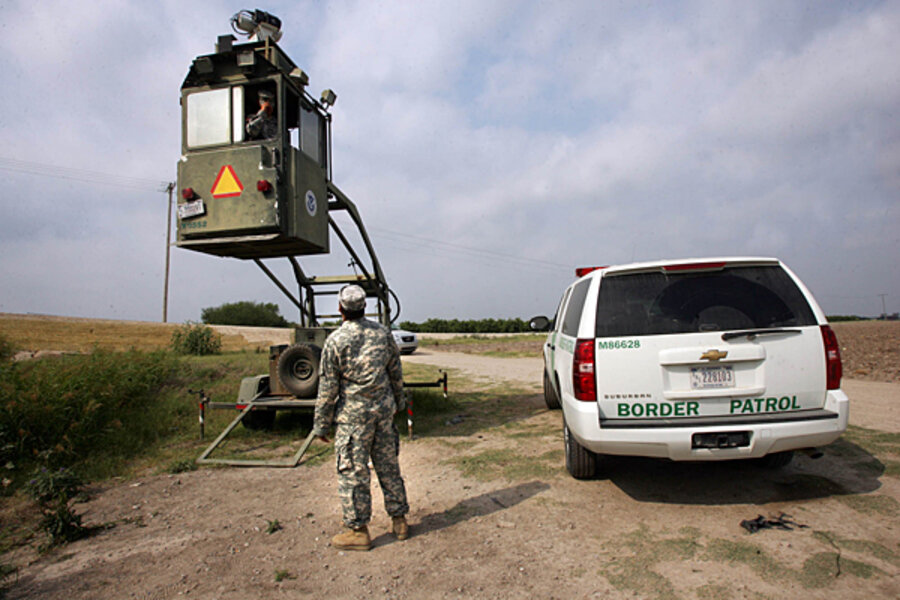Behind decline in US-Mexico border crossings: higher risks, lower rewards
Loading...
| Phoenix
Arrests of illegal immigrants along the Southwest border are down to levels not seen since the 1970s, signaling that fewer people are trying to enter the United States amid strengthened enforcement and a weakened economy.
The drop in would-be border crossers continues a downward trend that US immigration officials attribute largely to a massive and unprecedented buildup of law-enforcement manpower and technology in recent years.
“It all works together, it slows them down,” says border patrol agent Jason Rheinfrank, an agency spokesman in the Tucson, Ariz., sector.
The 327,577 people arrested along the 2,000-mile border with Mexico in fiscal 2011, which ended Sept. 30, is the lowest number recorded since 1972. By comparison, more than 1.6 million people were caught trying to sneak into the US in 2000.
In Arizona, which is the busiest corridor for illegal crossings, arrests totaled 129,118 – a 41 percent drop from the previous year and the lowest since 1994, when the border patrol detained 160,680 people.
Texas followed with 118,911, California with 72,638, and New Mexico with 6,910.
Arizona authorities also recovered the bodies of 192 people who died trying to cross the border, down from 250 in fiscal 2010. Most border crossers die from exposure to Arizona's scorching summer heat in remote desert areas, where they go to escape stepped-up border enforcement.
In addition to a fortified border, US economic conditions and other factors are shown to have contributed to the steady decline, says Jeffrey Passel, a senior demographer at the Pew Hispanic Center, a nonpartisan research organization that studies the US Hispanic population.
“Right now we know that it’s hard for people to find a job here, so if it’s expensive and dangerous and difficult and you can’t get a job, it’s not surprising that the numbers have gone down,” Mr. Passel says.
The latest figures confirm that the once-common back-and-forth crossings between the US and Mexico – the home country for nearly 60 percent of all illegal immigrants living and working in the US – have been declining for the past decade.
“That’s one of the things that’s fallen off with the economy or with the enforcement, and more and more of the unauthorized immigrants, once they’re here, they tend to stay here,” Passel says.
While arrests have decreased significantly along the US-Mexico border, the numbers show an increase in drug seizures. Authorities last year confiscated 3 million pounds of narcotics, mostly marijuana, up from 2.9 million pounds. Nationally, nearly 5 million pounds of narcotics were seized, a 20 percent increase from fiscal 2010.





